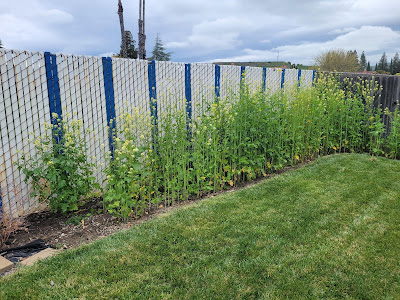One of the benefits of growing Mustard Greens as a cover crop is its ability to clean the soil when tilled into the ground. When tilled into the soil, the plant material decays. As it does so, it releases volatile gasses containing chemical compounds that fumigate the soil. The term for this kind of cleaning of the soil by growing brassicas, mustard greens or radishes is called “biofumigation”.
An essential component of biofumigation is to cover the plot as soon as possible after incorporating the chopped up plants into the soil. Instead of saturating the surrounding soil, the volatile gasses will dissipate if not properly covered. While using plastic is generally preferred, I decided to do what I could with a layer of paper and soil.
After chopping up the plants, I covered the debris with packaging paper and a layer of a high-quality soil blend. I made sure to water it all in well. In the end, between the off-gassing and the paper, the end result did dramatically decrease the incidence of weeds in the garden this last spring.




















































































